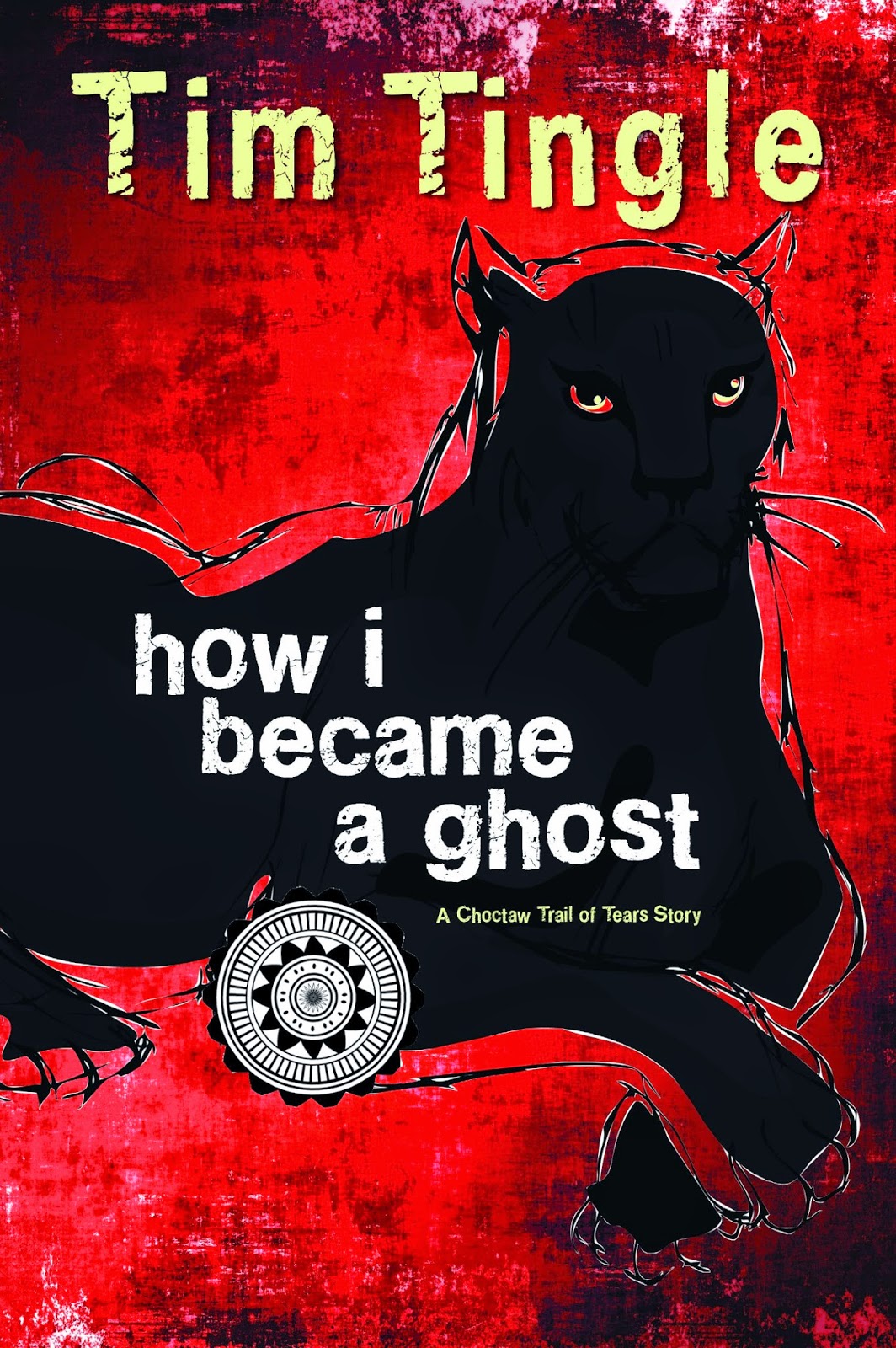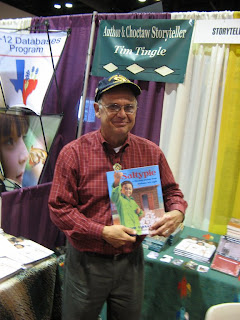Stone River Crossing
Published in 2019 by Lee and Low
Reviewed by Debbie Reese
Status: Not recommended
****
As I've said before about Tim's books, it is important--crucial, actually--that teachers take note that he emphasizes the sovereign nation status of the people in the stories he creates. He does that with Stone River Crossing, too. The time and location of the story are the first words we see after the title of chapter 1. Those words:
1808, City of Bok Chitto, Choctaw NationThe story opens with a Choctaw family. A Choctaw girl, specifically, named Martha Tom. There's a wedding planned for that day and her mom sends her out to pick blackberries [Note on Dec 16: I typed "blueberries" in the review and have since corrected that error]. All the blackberries on their side of the river are gone, so, she crosses the river. On the other side is a plantation. There are many berries there, because:
No one ever picks berries on that side of the river. They're too busy picking cotton, and the guards never let the slave workers get close to the river.She goes on picking and eating berries and gets lost. She remembers her mother's warnings not to play by the river:
The plantation guards will capture you. They will make you a slave, just like the field workers.Reading "slave workers" and "field workers" stopped me. Those words reminded me of news articles in 2015 about a McGraw Hill textbook that used the word "workers" as follows:
The Atlantic Slave Trade between the 1500s and 1800s brought millions of workers from Africa to the southern United States to work on agricultural plantations.An African American parent, Roni Dean-Burren, posted a screenshot of her text exchange with her 9th grade son, over that passage in his textbook. You can see their texts on Instagram. McGraw Hill subsequently issued a statement that said, in part:
"...we conducted a close review of the content and agree that our language in that caption did not adequately convey that Africans were both forced into migration and to labor against their will as slaves.""Workers" or variations of it appear several times in Stone River Crossing. Some examples:
- The church on the plantation is "the field workers' church"
- "Field workers" toss cotton bolls into their shoulder bags
- "House servants" greet Choctaw visitors
- "Well dressed household workers" tie Choctaw ponies to a railing
My question is: why is the word "worker" used so much in this book? Is it an effort not to use "slave"? There's been a lot of writing in recent years about that word. Instead of "slave" people are asked to use "enslaved" person/man/woman/child so that people are not objectified and so that the institution of slavery is seen as something that people did to other people.
To work on this review, I listened to a Teaching Tolerance podcast, Teaching Slavery Through Children's Literature. Dr. Ebony Elizabeth Thomas was the guest. There's a lot of hard thinking going on, about how to--and how not to--include slavery and enslaved peoples in children's books! It is a very complex conversation.
As I think about that conversation and the words used in Stone River Crossing, I wonder if Tingle and his editor were having those hard conversations and chose to use workers to avoid objectifying the Black characters in this story? Of course, intent doesn't matter. And, in fact, the word slave appears 52 times (I have a Kindle copy of the book).
What matters is the impact on the reader, and I think that "worker" is like the problem in the McGraw Hill textbook. Stone River Crossing, then, doesn't work.
I'm still thinking--hard--about this! We are in a moment of that "drive to educate" that Tim said in his acknowledgment. I'll be back if/when I've done more reading and have more to say. And--I'm not sure what I've said makes any sense! That's the complexity of the topic of writing about slavery.




























